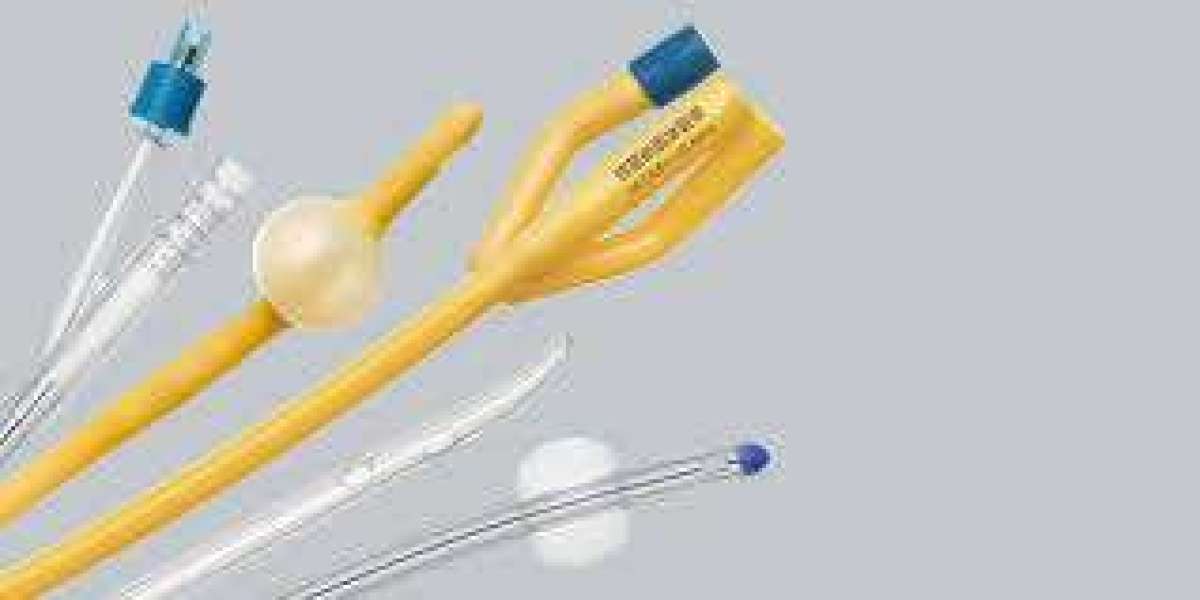The Urinary Catheters Market is undergoing significant transformation, driven by technological advancements, evolving patient needs, and a growing emphasis on infection control. A central aspect of this evolution is the comparison between coated and uncoated catheters, each offering distinct advantages and considerations in various clinical settings.
Understanding Catheter Types
Uncoated Catheters: These are traditional catheters made from materials like polyvinyl chloride (PVC) or silicone. They require manual lubrication before insertion, which can increase the risk of urethral trauma and urinary tract infections (UTIs) due to potential contamination during handling. Despite these risks, uncoated catheters are cost-effective and widely used, especially in home care settings where patients are trained in self-catheterization.
Coated Catheters: Designed to enhance patient comfort and reduce infection risks, coated catheters come with various surface treatments:
Hydrophilic Coatings: These coatings absorb water, creating a slippery surface that reduces friction during insertion and removal, thereby minimizing urethral irritation.
Antimicrobial Coatings: Incorporating agents like silver ions or nitrofurazone, these coatings aim to prevent bacterial adhesion and biofilm formation, thereby reducing the incidence of catheter-associated urinary tract infections (CAUTIs).
The manufacturing of urinary catheters is a complex and highly regulated process that ensures the production of safe and effective medical devices. These devices are essential for patients with urinary retention, incontinence, or those undergoing certain medical procedures. The manufacturing process involves several key stages, including material selection, extrusion, molding, assembly, and sterilization.
1. Material Selection
The choice of materials is crucial in catheter manufacturing to ensure biocompatibility, flexibility, and durability. Commonly used materials include:
Silicone: Preferred for its biocompatibility and resistance to bacterial colonization.
Polyurethane: Offers strength and flexibility, making it suitable for long-term use.
Polyethylene: Used for its clarity and ease of processing.
Latex: Historically used but less common due to potential allergic reactions.
These materials are selected based on the specific requirements of the catheter, such as intended use, duration, and patient sensitivity.
2. Extrusion and Molding
Once the material is selected, it is processed into the desired shape through extrusion and molding:
Extrusion: The raw material is melted and forced through a die to form long, continuous tubes.
Molding: The extruded tube is then molded into the final catheter shape, which may include features like balloon cuffs or drainage eyes.
Advanced techniques, such as polymer solution casting, may be employed to create multi-layered structures with varying properties along the length of the catheter .
3. Tip Forming and Eyelet Creation
The distal end of the catheter is shaped to ensure smooth insertion and minimize patient discomfort:
Tip Forming: The end of the catheter is heated and shaped to create a rounded tip.
Eyelet Creation: Small openings are made to allow for fluid drainage.
Precision in these steps is vital to prevent tissue damage and ensure proper functionality.
Clinical Applications and Considerations
Infection Prevention: Coated catheters have been shown to lower the risk of CAUTIs. A meta-analysis indicated that antimicrobial-coated catheters significantly reduce the incidence of these infections compared to uncoated versions.
Patient Comfort and Compliance: Hydrophilic-coated catheters are associated with increased patient comfort due to their lubricious surface, which reduces insertion-related discomfort. This is particularly beneficial for patients requiring frequent catheterization, such as those with spinal cord injuries.
Cost Implications: While coated catheters are more expensive upfront, their ability to reduce complications like UTIs can lead to overall cost savings by minimizing hospital readmissions and additional treatments. However, the higher initial cost can be a barrier in settings with limited healthcare budgets.
Market Trends and Dynamics
Shift Towards Coated Catheters: The market is witnessing a gradual shift towards coated catheters, driven by their clinical benefits. In 2025, coated catheters are projected to account for 60.4% of the market share, reflecting their growing acceptance in both hospital and home care settings.
Regional Variations: North America leads the market for antimicrobial-coated urinary catheters, contributing approximately 40% of the total revenue. Europe follows with a 30% share, while the Asia-Pacific region accounts for 20%. The fastest-growing region is Asia-Pacific, driven by increasing healthcare infrastructure and awareness.
Technological Innovations: Advancements in coating technologies, such as the development of polyzwitterions and polyethylene glycol coatings, are enhancing the anti-fouling properties of catheters, thereby improving their performance and patient outcomes.
Challenges and Opportunities
Regulatory Hurdles: The adoption of new catheter technologies is subject to regulatory approvals, which can vary across regions. Ensuring compliance with these regulations is essential for market entry and acceptance.
Cost-Effectiveness Analysis: Demonstrating the long-term cost benefits of coated catheters is crucial for their widespread adoption, especially in cost-sensitive healthcare systems. Studies have shown that hydrophilic-coated catheters can be cost-effective by reducing the incidence of UTIs and associated treatment costs.
Patient Education and Training: Proper training in catheter use, especially for self-catheterization, is vital to maximize the benefits of coated catheters and minimize complications. Healthcare providers play a key role in educating patients about the correct usage techniques.
Conclusion
The dynamics of the urinary catheters market are influenced by the ongoing evaluation of coated versus uncoated catheters in diverse clinical applications. While uncoated catheters remain prevalent due to their cost-effectiveness, the clinical advantages of coated catheters—such as reduced infection rates and enhanced patient comfort—are driving their increased adoption. As technological innovations continue and healthcare systems prioritize patient outcomes and cost-efficiency, the preference for coated catheters is expected to grow, shaping the future landscape of urinary catheterization.








